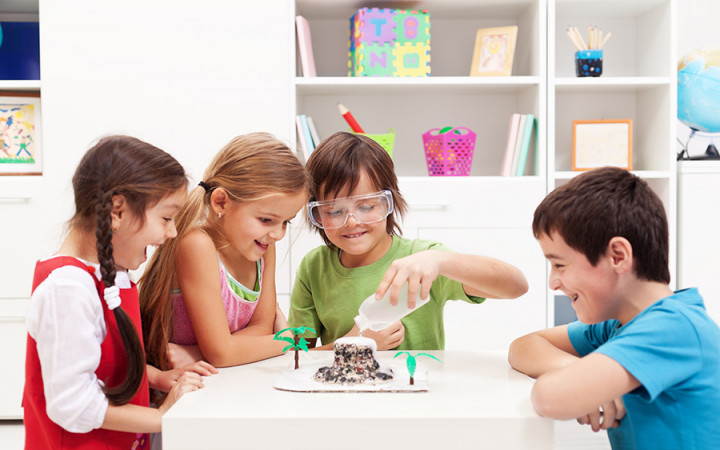Today’s Wonder of the Day was inspired by Ngatau. Ngatau Wonders, “What Would Happen If Vinegar And Baking Soda Combined?” Thanks for WONDERing with us, Ngatau!
How hungry are you when you get home from a busy day at school? Starving? Ravenous? Famished? Those are just a few of the adjectives that kids might use to describe their hunger pains when they burst through the front door.
Instead of starting on homework, the first stop many kids make is the refrigerator. If you've ever searched the refrigerator for food after school, you may have noticed that it also usually contains all sorts of other items that don't make a good after-school snack.
The door full of condiments contains items that are usually only good if they're added to something else. You're also likely to find other items that are used in the cooking process, such as vinegar. You might also find a box of baking soda intended to absorb odors in the refrigerator.
If you can't find edible food, you might be tempted to conjure up your own concoction with some of the things you found inside. Before you become a mad scientist in the kitchen, though, you should know that some of those things might not make a tasty treat.
Take baking soda and vinegar, for example. Mixing those two ingredients will get you a reaction, but it won't taste good. In the right amounts and containers, the mixture can even be downright explosive!
Baking soda and vinegar react chemically because one is a base and the other is an acid. Baking soda is a basic compound called sodium bicarbonate. Vinegar is a diluted solution that contains acetic acid.
The baking soda and vinegar reaction is actually two separate reactions. The first reaction is the acid-base reaction.
When vinegar and baking soda are first mixed together, hydrogen ions in the vinegar react with the sodium and bicarbonate ions in the baking soda. The result of this initial reaction is two new chemicals: carbonic acid and sodium acetate.
The second reaction is a decomposition reaction. The carbonic acid formed as a result of the first reaction immediately begins to decompose into water and carbon dioxide gas.
Just like carbon dioxide bubbles in a carbonated drink, the carbon dioxide (that formed as the carbonic acid decomposed) rises to the top of the mixture. This creates the bubbles and foam you see when you mix baking soda and vinegar.
If you mix a large amount of baking soda and vinegar in a small container with a narrow opening, expect an impressive eruption! Many science teachers use this simple chemical reaction to teach students about chemistry. If you've ever made a homemade volcano as a science experiment, then you know firsthand what happens when baking soda and vinegar react!





